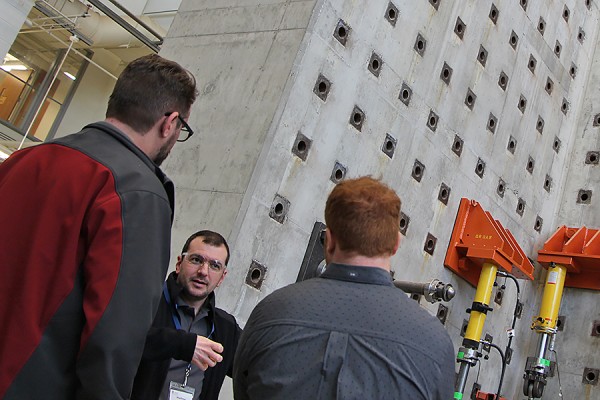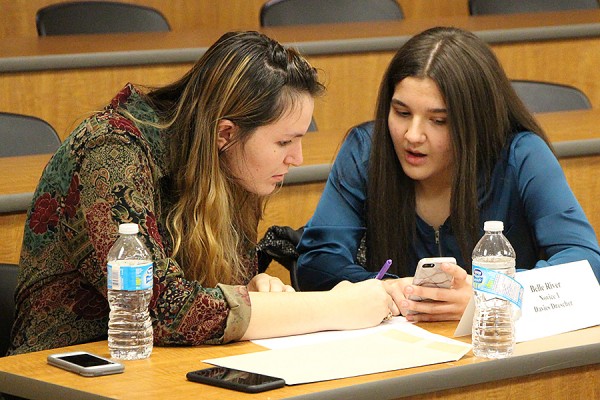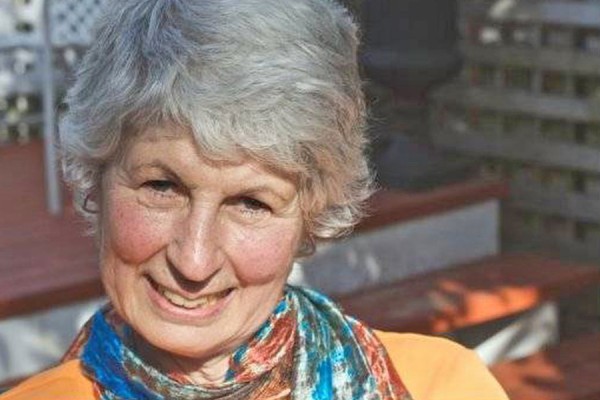 Chemistry professor Tricia Carmichael and doctoral student Yunyun Wu display samples of fabric bearing conductive coatings of gold.
Chemistry professor Tricia Carmichael and doctoral student Yunyun Wu display samples of fabric bearing conductive coatings of gold.
Tricia Carmichael’s research group has cleared a major wearable technology hurdle by creating conductive fabric that looks and feels like real clothing. Using a chemical process, they deposit a nanometre-thick gold coating onto the fibres of ordinary fabric, so the smart electronic device can move, be stretched and washed — while remaining conductive.
“People don’t want to feel, or even really see the technology so the vision for wearable electronics involves creating an imperceptible boundary between humans and the device,” says Dr. Carmichael, professor of chemistry and biochemistry.
“We used a chemical approach to actually coat individual fabric fibres with gold to get conductive pathways imbedded in the structure of the fabric, which is the ultimate integration. By merely weaving silver thread or fine wires through fabric, you will get breakage and potentially uncomfortable clothes.”
Combining conducting materials with textiles is challenging because knitted textiles are porous. The group used a low-cost method called electroless nickel immersion gold plating, a solution-based technique commonly employed in printed circuit board fabrication. This process deposits a gold coating over the individual textile fibers, producing a highly conductive textile that retains the softness and stretchability of the knitted fabric.
The team ran the material through rigorous tests to ensure it remained durable through normal wear and tear.
Doctoral candidate Yunyun Wu immersed the gold-coated textile in a salt solution to simulate exposure to sweat, and then subjected it the laundry cycle. After washing with ordinary laundry detergent, she rinsed it out and put it in the oven to simulate a dryer. There was minimal change in electrical resistance after each step.
“Even my mother got involved. We wanted to demonstrate wearability, so my mother sewed one of the gold patches onto exercise pants and my student went for a five-kilometer run,” says Carmichael. “We measured electrical properties before and after to show minimal change — this is truly a wearable technology.”
As part of the research project, the team also created a self-illuminating fabric. Using additional chemical processes the gold fabric was able to emit light on its own to become an electroluminescent fabric.
“Our fabric self-illuminates, so even in low light or poor visibility conditions, this self-illuminated safety apparel would be easily seen,” says Carmichael. “Unlike the reflective tape commonly found on safety vests worn by outside workers or cyclists, which requires the external light of a headlight to light it up, you’d be glowing wearing our self-illumination strip.
“This is much safer and is a great integration of function into fabric.”
The all-female scientist research team consists of Tricia Carmichael, Wu and doctoral candidates Sara Mechael and Yiting Chen. They published their findings, Solution Deposition of Conformal Gold Coatings on Knitted Fabric for E-Textiles and Electroluminescent Clothing, in the journal Advanced Materials Technologies. Last summer, Wu won the RSC Material Horizons Poster Prize for her research on making devices for wearable electronics out of fabric at the Canadian Society of Chemistry’s 2017 conference and exhibition.
Carmichael says that future applications of this technology will be with medical devices and biometrics. The next phase of research includes expanding the study to include other fabrics besides polyester, such as nylon and spandex. She would also like to scale up to larger equipment to imbue already made clothing with these devices.
Sara Elliott




